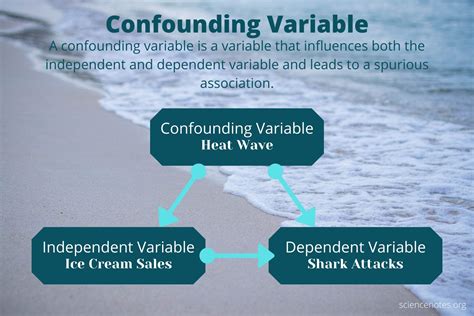In AP Psychology, a confounding variable is a variable that influences both the independent and dependent variables in an experiment, making it difficult to determine the true effect of the independent variable on the dependent variable.

Understanding Confounding Variables
Confounding variables can be either extraneous variables or intervening variables. Extraneous variables are variables that are not part of the researcher’s hypothesis or experimental design. Intervening variables are variables that are part of the causal pathway between the independent and dependent variables.
Identifying Confounding Variables
Researchers can identify confounding variables by carefully considering all of the variables that could potentially influence the results of their experiment. Some common confounding variables include:
- Age
- Gender
- Education level
- Socioeconomic status
- Personality traits
- Environmental factors
Controlling for Confounding Variables
Researchers can control for confounding variables by:
- Randomly assigning participants to different experimental conditions
- Matching participants on relevant variables
- Using statistical techniques to control for the effects of confounding variables
Examples of Confounding Variables
Here are some examples of confounding variables:
- In an experiment examining the effects of caffeine on attention, the researcher fails to control for the participants’ sleep habits. Sleep habits could confound the results of the experiment because participants who are sleep-deprived may be more likely to experience difficulty paying attention.
- In an experiment examining the effects of a new teaching method on student achievement, the researcher fails to control for the students’ prior knowledge of the subject matter. Prior knowledge could confound the results of the experiment because students who have more prior knowledge may be more likely to achieve higher scores on the test.
Tips for Controlling Confounding Variables
Here are some tips for controlling confounding variables:
- Identify all of the variables that could potentially confound the results of your experiment.
- Randomly assign participants to different experimental conditions.
- Match participants on relevant variables.
- Use statistical techniques to control for the effects of confounding variables.
- Be aware of the limitations of your experimental design and interpret your results accordingly.
Conclusion
Confounding variables can be a major threat to the validity of an experiment. By carefully considering all of the variables that could potentially confound the results of their experiment, researchers can take steps to control for these variables and ensure that their results are accurate and reliable.
Table 1: Common Confounding Variables
| Confounding Variable | Example |
|---|---|
| Age | Participants in different age groups may have different levels of experience or knowledge. |
| Gender | Men and women may respond differently to different treatments or stimuli. |
| Education level | Participants with different levels of education may have different levels of knowledge or skills. |
| Socioeconomic status | Participants from different socioeconomic backgrounds may have different access to resources or opportunities. |
| Personality traits | Participants with different personality traits may respond differently to different treatments or stimuli. |
| Environmental factors | Factors such as noise, temperature, or lighting can influence the results of an experiment. |
Table 2: Methods for Controlling Confounding Variables
| Method | Description |
|---|---|
| Random assignment | Participants are randomly assigned to different experimental conditions to ensure that the groups are equivalent on all relevant variables. |
| Matching | Participants are matched on relevant variables, such as age, gender, or education level, to ensure that the groups are equivalent. |
| Statistical techniques | Statistical techniques, such as analysis of covariance (ANCOVA) or regression analysis, can be used to control for the effects of confounding variables. |
Table 3: Examples of Confounding Variables in Psychology Experiments
| Experiment | Confounding Variable | Potential Impact |
|---|---|---|
| Experiment examining the effects of caffeine on attention | Sleep habits | Participants who are sleep-deprived may be more likely to experience difficulty paying attention. |
| Experiment examining the effects of a new teaching method on student achievement | Prior knowledge of the subject matter | Students who have more prior knowledge may be more likely to achieve higher scores on the test. |
| Experiment examining the effects of a new drug on anxiety | Participants’ expectations | Participants who expect the drug to be effective may experience a placebo effect. |
Table 4: Tips for Controlling Confounding Variables
| Tip | Description |
|---|---|
| Identify all of the variables that could potentially confound the results of your experiment. | This can be done by reviewing the literature on the topic and by brainstorming with colleagues. |
| Randomly assign participants to different experimental conditions. | This ensures that the groups are equivalent on all relevant variables. |
| Match participants on relevant variables. | This can be done by using matching procedures or by using statistical techniques to control for the effects of confounding variables. |
| Use statistical techniques to control for the effects of confounding variables. | This can be done by using analysis of covariance (ANCOVA) or regression analysis. |
| Be aware of the limitations of your experimental design and interpret your results accordingly. | No experiment is perfect, and there may be some confounding variables that you are unable to control. |
